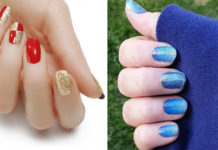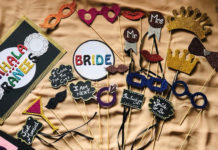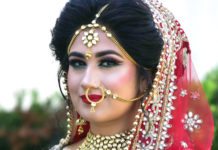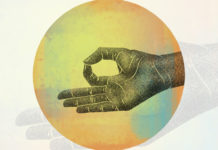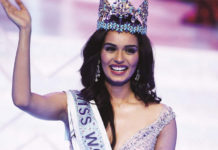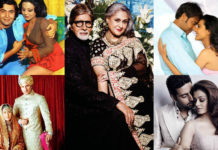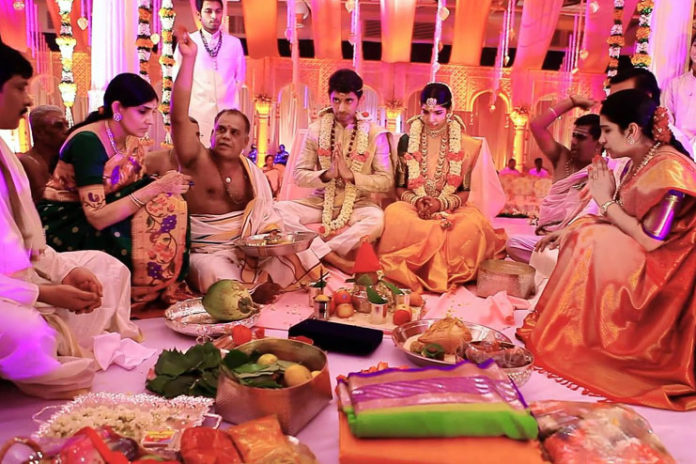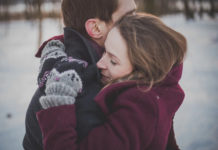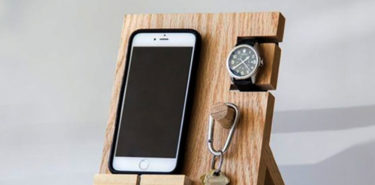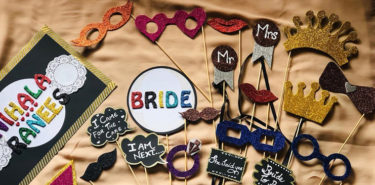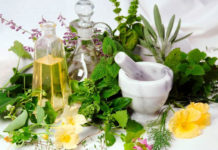Affiliate Disclaimer
Some links in this article are affiliate links. We may earn a small commission if you make a purchase through these links, at no extra cost to you. We only recommend products we find useful to our readersMarriage, is one of the most beautiful experience in life. India has unity in diversity in its culture. Many different regions have many different ritual, traditions in their way to make the wedding very prosperous and successful. Today, in this article I am going to talk about wedding rituals, down south state, that is, Kerala Brahmin wedding. Generally, in Hindu wedding, the dates are set according to the Nakshatra, or stars position and this ritual are thoroughly followed in Kerala brahmin wedding, which is known as Nakshatra Porutham. Here, are some ritual tips in Kerala Brahmin wedding, you must know.
Mesmerizing Kerala Brahmin wedding
1Vratham
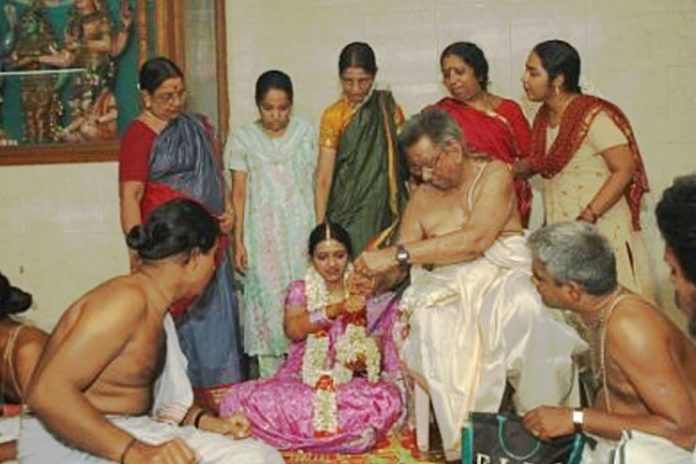
The ceremonies begin with vratham, which is performed separately by both the bride and the groom. For the bride, it basically means for binding of the kappu, the holy thread on the wrists, which meant to ward off the evil spirits. It also symbolizes a kind of protective armor for the bride.
For the groom, vratham begins with the invocations involving the Gods Indra, Chandra, Soma, and Agni. From then on the groom prepare himself, for a new chapter in his life as a grihastha or the householder.
2Janavasam & Nischaiyartham
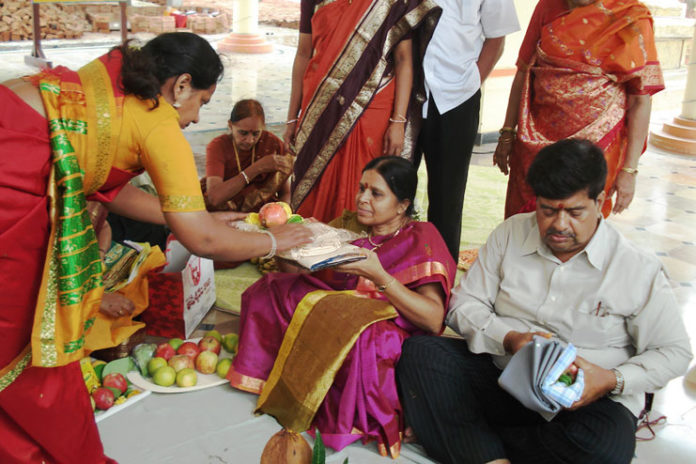
In here, the groom is invited to the ‘mandap’ and is basically sorted out differences between the families. It has a very important aspect of the marriage, where differences between the families are being sorted out. This ceremony generally takes place in a temple.
The bride’s family bring the turmeric, nuts, betel leaves, and clothes for the groom. The bride’s brother garlands the groom, and the sugar candy is distributed to all. The groom is then escorted to his car and then the family leaves the procession for the ‘mandapam’.
When they reach the marriage venue, the bride is led outside by closest friends to see her future husband! ‘Aarthi’ is being performed and they will break a coconut to ward off the evil. The groom then goes to the ‘medai’, an elevated place in the ‘mandapam’ where the ceremonies are performed. Members of both the families, then sit opposite to each other and a ‘Lagna Patrika’, that is, a marriage contract is written and read aloud by the the ‘pujari’. ‘Thamboolams’, the platters of the betel nuts, dry fruits, turmeric, coconuts, and ‘kumkum’ and some gifts are then exchanged. The cone shaped ‘parupputhengai’, a special sweetmeat, is also a very important part of all the ceremonies.
3Kasi Yatra
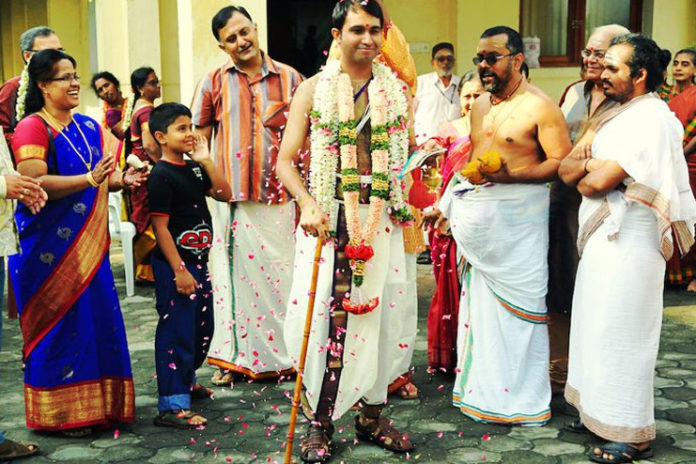
It is a very important part of the wedding ceremony. Immediately after his student life, according to the traditions, the young bachelor has two alternatives in front of him – Grihastha or Sanyas. By being in a satwic state due to the strict adherence of his bachelorhood as well as the observance of the austerities, he is completely drawn towards asceticism.
Therefore, he tries to make his way to the Kasi, completely with an umbrella, slippers, a fan made of bamboo etc. On his way to the Kasi, the bride’s father intervenes as well as advises him of the superiority of the married life to the ascetic life. He also promises that, he will give his daughter as a companion to face all the challenges of his life.
Dressed in a traditional ‘panchakatcham’, holding a fan, an umbrella, a walking stick, and a towel which contains ‘dal’ (lentils) and rice and tied to his shoulder, the groom try to embark on the mock pilgrimage. As he tries to step out of the ‘mandapam’, the bride’s father plead to him to not go to ‘Kashi’ and marry his daughter.
After much of the ado, the groom then accepts and returns to the ‘mandappam’. The umbrella must remain with the groom, and remind him the future of the advice.
4Kanya Danam
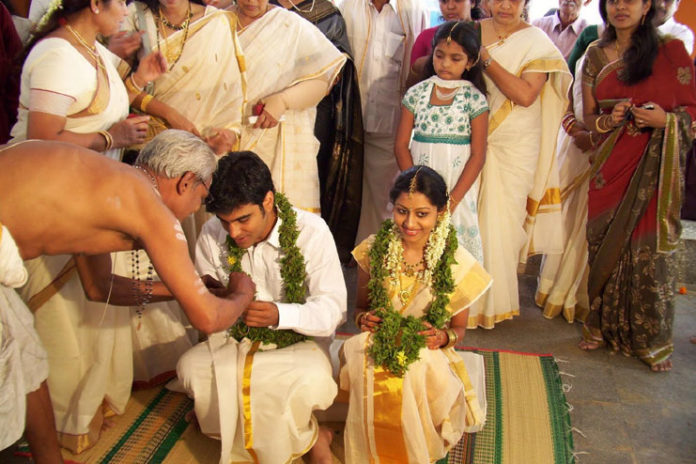
Kanya Danam or giving away the bride. The bride sits on her father’s lap and is given away as a gift to the bridegroom. In the head of the bride, a ring which is made of Darbha or the Kusa grass is being placed and over it a yoke is placed. The gold Mangal Sutra or Thali is then placed on the aperture of the yoke. Water is then poured though the aperture.
The symbolism of this yoke is drawn out an ancient rural life where the mode of transport was the bullock cart. It basically signifies that the bullock cart cannot run with just one bull like that, a marriage need both the bride and the groom. Both of them must face their responsibilities together.
Then the bride gets an ablution. A brand new sari, exclusively for the occasion, called the ‘koorai’. The colour of the sari is ‘arraku’ i.e. red, the colour believed to be associated with Shakti. This sari is then draped around the bride by the sister of the groom, which signifies her welcome to the family. A belt, which is made reed grass is tied around the bride’s waist.
5Kankana Dhaarana
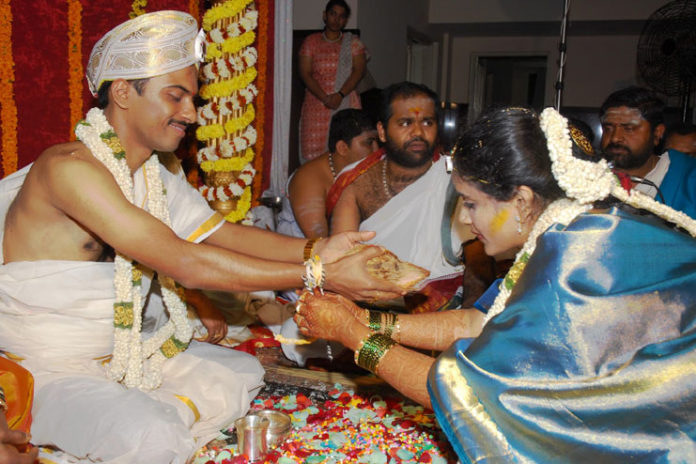
The bride then ties a string to the piece of turmeric around the wrist of the groom to bind them on a religious vow. It is after tying of the kankanam that the groom gets the right to touch the bride. Later, the groom ties a kankanam to the wrist of the bride.
6Mangalya Dharanam
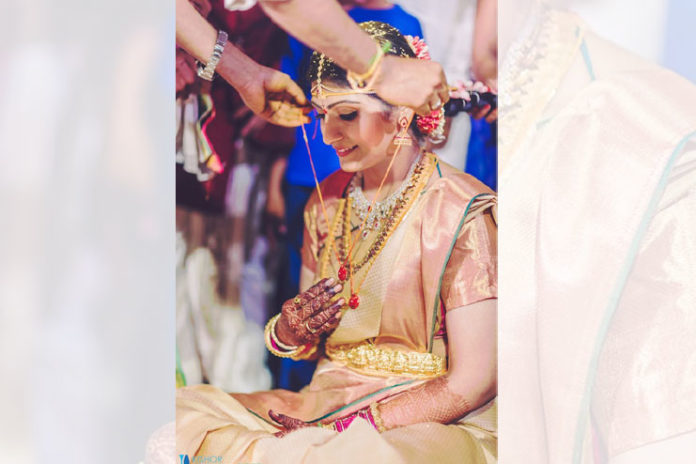
The tying of the Mangal Sutra takes place, exactly at the pre-determined hour. The bride is then seated over the sheaf of the grain-layden hay looking at the eastward while the groom faces to the westward. The groom then puts the Mangal Sutra around the neck of the bride. As he does so, the Nadaswaram is played loud and fast to muffle any type of inauspicious sounds at the very critical hour.
This is called Getti Melam. Sumangali ladies sing the auspicious songs in the same time when the mangal sutra and a turmeric thread is put around the bride’s neck. Three knots are tied, the first one by the groom, the other two knots by the groom’s sister to make the bride a part of their family. A vedic hymn is being recited by the groom when he ties the knot.
7Paani Graharam
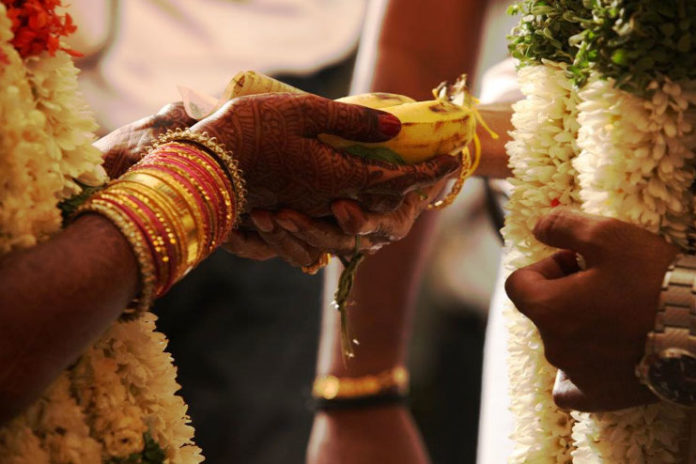
Then the ritual is Paani Graharam. Paani Graharam means holding hands. The groom holds the hand of the bride.
8Saptha Padhi
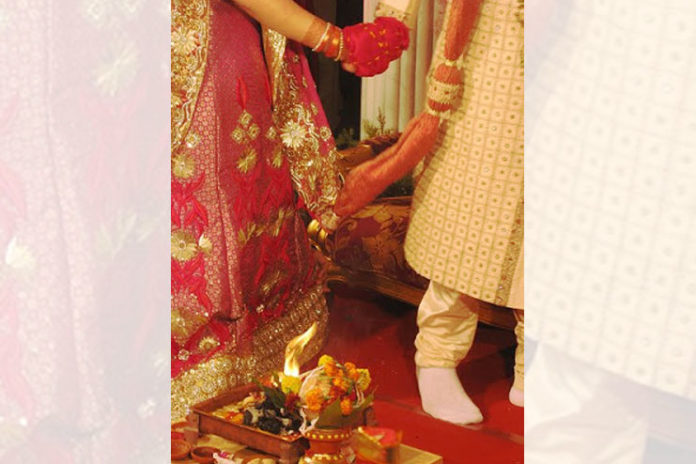
Holding the hands, both the bride and the groom walk the seven steps around the holy fire. It is the most important part of a marriage ceremony. The only part when they will walk these seven steps together the marriage becomes complete. With every step, they take the vow. It is believed that when one walks the seven steps with another, the person becomes the other’s friend.
9Pradhana Homam
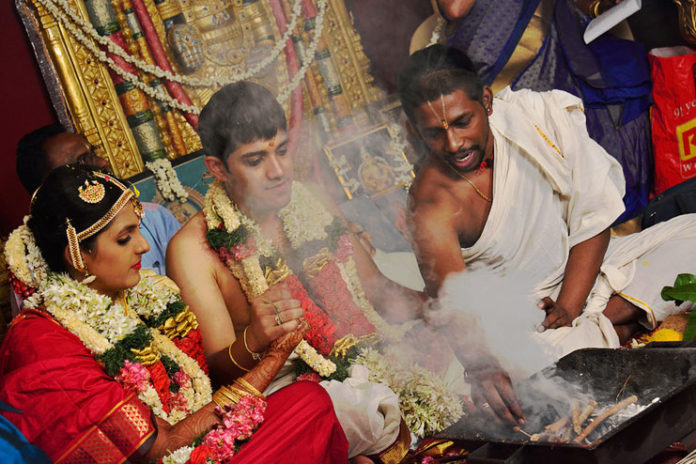
A very crucial part of this wedding is that the couple must pay the homage to Agni, the God of Fire. The couple goes around the fire, and feed it with twigs of nine types and ghee to the holy trees as a sacrificial fuel. The fumes then arise possess medicinal, curative and cleansing effects on the bodies of the couple. Agni is considered the mightiest power in the cosmos, the all-round benefactor, the sacred purifier, is deemed as a witness to the marriage. Hence, the term ‘Agni Saakshi’ or witness by fire.
10Treading on the Grindstone
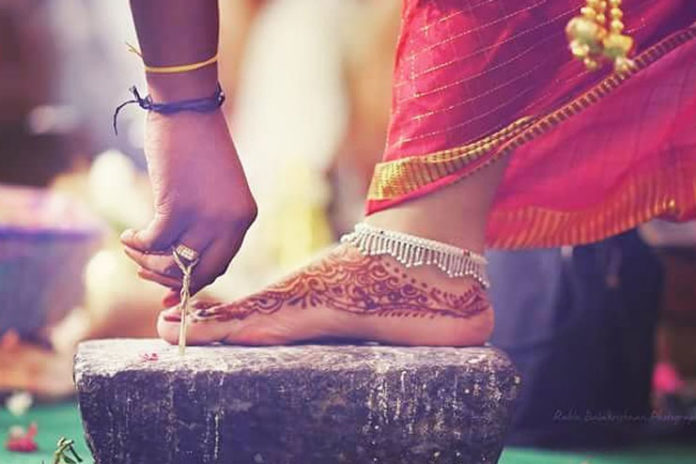
The groom must hold the bride’s left toe and help her to tread on the grindstone that is kept on the right side of the fire. This ritual is symbolic to rock foundation for the union.
11Laaja Homam
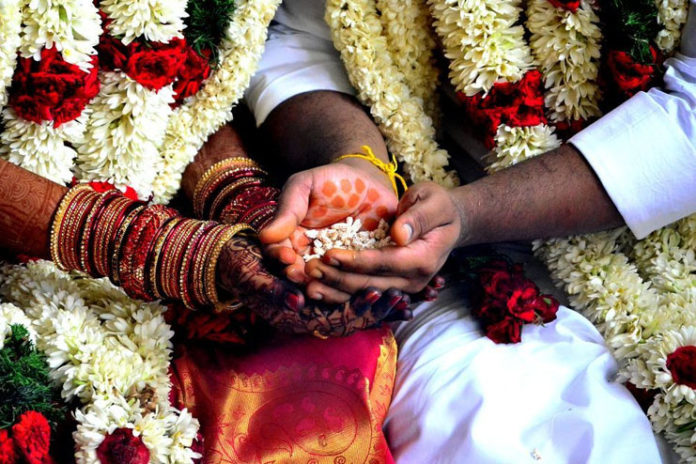
This comprises of the bride’s offering to the fire as a sacrifice. As an expression of the sibling support to the marriage, her brother helps her. He gives her a handful of rice grains which she hands it to the groom, who on the behalf, and feed it to the fire. Through this food offering, the bride seeks a long life for the husband and for the propagation of the family. Participation of the bride’s brother indicates the continuance of the link between the two families after marriage. Then the couple circles the fire three times. The feeding of rice to the fire is repeated thrice.
12Graha Pravesham
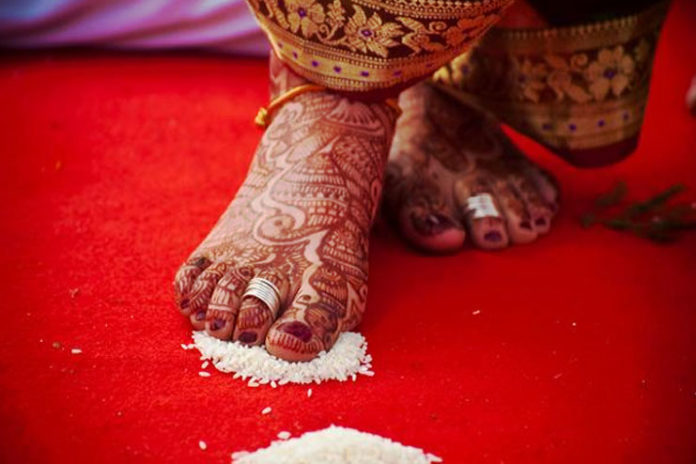
Taking the fire from the Laaja Homam, the bride can leave her home and then enters the new home of her in-laws. The Vedic hymns that is being recited at this time, sound like a mother’s advice.
Smart And Realistic Marriage Tips
By –




